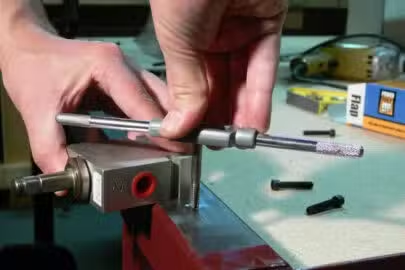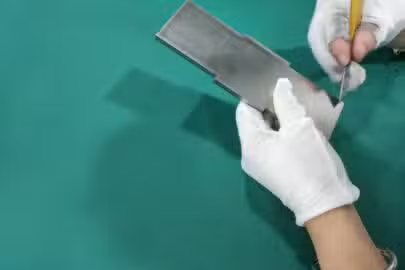The choice of medical device and equipment materials is paramount in modern healthcare. From surgical instruments to implants, the properties of these materials significantly impact patient outcomes. Among the options available, 6 are indispensable medical-friendly materials, each with unique attributes that cater to specific medical applications.
In this article, we journeyed through these top-tier medical-grade materials, shedding light on their properties and pivotal roles within the healthcare industry. Let’s delve into the world of these crucial materials and discover how they revolutionize healthcare as we know it.
Stainless Steel

It is a versatile and widely used material in the medical field due to its exceptional durability, corrosion resistance, and hygienic properties. It is composed mainly of iron, with a minimum of 10.5% chromium content, which forms a protective oxide layer on its surface, preventing rusting and corrosion. This makes it an ideal choice for various medical applications.
Properties of Stainless Steel
These are some of the notable stainless steel properties:
- Corrosion Resistance: One of the essential advantages of stainless steel is its high corrosion resistance. This property is crucial in medical settings where exposure to bodily fluids and sterilization processes is common.
- Strength and Durability: It is known for its robustness and ability to withstand harsh conditions. This makes it a reliable material for medical instruments and equipment that need to maintain structural integrity over time.
- Biocompatibility: Medical-grade stainless steel is one of the biocompatible material , meaning it is well-tolerated by the human body. This property is essential for implants and surgical tools directly contacting tissue or bone.
- Ease of Sterilization: Stainless steel can be easily sterilized through various methods, including autoclaving, crucial in maintaining aseptic conditions in medical environments.
- Non-reactive: It is non-reactive with most medications and chemicals, ensuring that it does not interact negatively with substances it comes into contact with during medical procedures.
Applications of Stainless Steel in the Medical Field
Here are some of the key applications of stainless steel in the medical field:
- Surgical Instruments: Stainless steel is the preferred material for surgical instruments such as scalpels, forceps, scissors, and needle holders. Its corrosion resistance, strength, and ease of sterilization are essential in maintaining the integrity and cleanliness of these critical tools.
- Implants and Prosthetics: Medical-grade stainless steel is used to manufacture implants like bone plates, screws, and joint replacements. Its biocompatibility and durability make it an excellent choice for these life-changing medical devices.
- Dental Instruments: Stainless steel is widely used in dental instruments like dental mirrors, probes, and extraction forceps. Its non-reactive nature and corrosion resistance are crucial to hygiene during dental procedures.
- Medical Furniture and Equipment: Stainless steel is commonly used to construct medical furniture, such as surgical tables, cabinets, and trays. Its durability and ease of cleaning are vital in maintaining a sterile environment.
- Medical Carts and Trolleys: Stainless steel carts and trolleys are used to transport medical equipment, supplies, and patient records within healthcare facilities. The material’s strength and resistance to corrosion are important for long-term reliability.
Titanium

Titanium, a versatile metal, has earned its place as a cornerstone in medical devices, offering a unique combination of biocompatibility and strength. This remarkable material is revolutionizing healthcare by addressing the demanding requirements of various medical applications.
Properties of Titanium in the Medical Field
- Biocompatibility
Titanium exhibits a high level of biocompatibility, minimizing the risk of adverse reactions when implanted into the human body. This property is crucial for medical applications where the material directly interacts with biological tissues, such as orthopedic and dental implants.
- Osseointegration
Titanium promotes osseointegration, allowing the material to fuse with surrounding bone tissue. This is particularly important for orthopedic and dental implants, ensuring a stable and enduring connection.
- Corrosion Resistance
Titanium is highly corrosion-resistant, making it suitable for long-term implantation in physiological environments. This property contributes to the durability and longevity of medical devices.
- High Strength-to-Weight Ratio
Titanium possesses an exceptional strength-to-weight ratio, providing strength comparable to steel but significantly lower density. This characteristic is advantageous for manufacturing lightweight yet robust medical implants.
- Fatigue Strength
The material exhibits excellent fatigue strength, making it suitable for applications that involve repetitive stress, such as orthopedic devices subject to constant mechanical loads.
Applications of Titanium in the Medical Field
- Orthopedic Implants
Titanium is widely used in orthopedic implants, including joint replacements, bone plates, and screws. Its biocompatibility, strength, and ability to integrate with bone tissue make it ideal for supporting and replacing skeletal structures.
- Dental Implants
Titanium is preferred for dental implants due to its biocompatibility and osseointegration capabilities. Dental implants made from Titanium provide a stable foundation for prosthetic teeth.
- Cardiovascular Devices
Titanium is utilized in cardiovascular implants, including stents and pacemaker components. Its corrosion resistance and compatibility with blood make it suitable for applications within the circulatory system.
- Surgical Instruments
Titanium is employed in manufacturing surgical instruments due to its durability and resistance to corrosion. Surgical tools made from Titanium maintain their integrity and performance over repeated use.
- Biomedical Devices
Titanium is used in various biomedical devices, such as neurological implants and spinal fixation devices.
Its properties make it well-suited for applications where the material must withstand physiological conditions and biomechanical stresses.
Magnesium
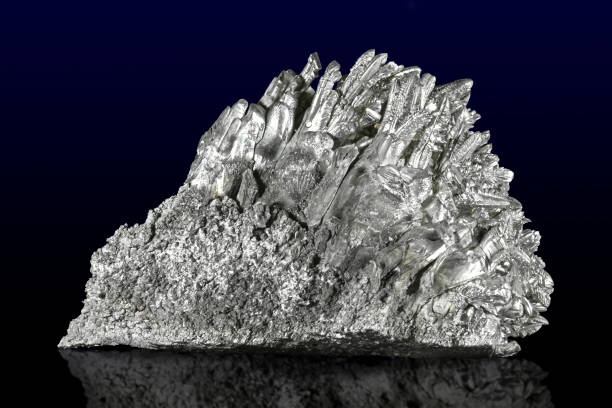
Traditionally recognized for its role in physiological processes within the human body, Magnesium is now emerging as a novel player in CNC medical materials. What sets magnesium apart is its unique ability to biodegrade over time, a characteristic that holds immense promise in the development of medical devices and implants.
Properties of Magnesium
- Biodegradability
Magnesium is inherently biodegradable, which means it can gradually dissolve in the body over time. This property is particularly advantageous for medical applications where temporary support is needed, such as orthopedic implants.
- Biocompatibility
Magnesium exhibits excellent biocompatibility, minimizing the risk of adverse reactions when implanted in the human body. This characteristic is crucial for medical devices to ensure compatibility with physiological environments.
- Density
Magnesium is a lightweight material with a density that is close to that of human bone. This makes it suitable for applications where the implant’s weight is critical, such as orthopedic and musculoskeletal devices.
- Mechanical Properties
While not as strong as other metals like titanium, magnesium has mechanical properties that are more similar to natural bone. This can lead to better load distribution and reduced stress shielding, especially in orthopedic applications.
- Corrosion Resistance
Magnesium is susceptible to corrosion; surface treatments and alloying can enhance its corrosion resistance. Proper corrosion control is crucial for successfully using magnesium in medical applications.
Applications in Medical Devices
- Orthopedic Implants
Magnesium has shown promise in orthopedic applications, particularly in developing temporary implants like screws and plates for fracture fixation. The biodegradability of magnesium aligns well with the healing process, eliminating the need for surgical removal.
- Cardiovascular Stents
Research is ongoing to explore the use of magnesium alloys in cardiovascular stents. The biodegradable nature of magnesium stents offers the potential for eliminating long-term complications associated with permanent stents.
- Dental Implants
While not as common as titanium, magnesium has been investigated for dental implant applications due to its biocompatibility and potential for biodegradability.
- Drug Delivery Devices
Magnesium-based materials are being explored for drug delivery applications. The controlled degradation of magnesium devices could release therapeutic agents in a controlled environment over time.
- Orthopedic Screws and Pins
Magnesium screws and pins are being investigated for their use in orthopedic surgeries. The temporary nature of these implants aligns well with the healing process, reducing the need for additional procedures for implant removal.
Polyethylene
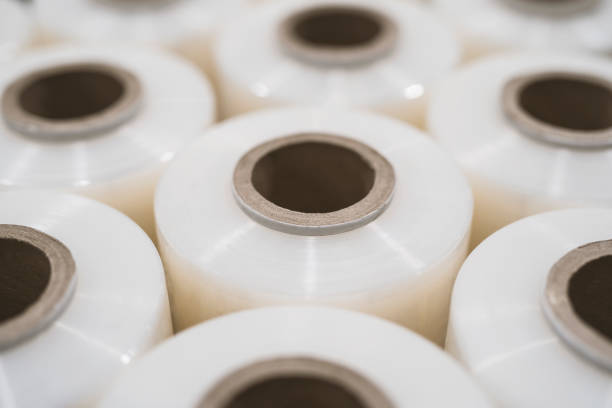
Polyethylene, a synthetic polymer with a rich history in various industries, has found a significant and versatile role in medicine. This material, known for its flexibility, durability, and biocompatibility, has become a cornerstone in developing various medical devices and implants.
Properties of Polyethylene
- Biocompatibility
Polyethylene is biocompatible, meaning it is well-tolerated by the human body. This property is essential for materials used in medical applications to ensure minimal adverse reactions.
- Flexibility and Durability
Polyethylene is known for its flexibility and durability, making it suitable for applications where resilience and strength are crucial. This property is precious in orthopedic implants and prosthetics.
- Low Friction
The material exhibits low friction characteristics, beneficial in articulation applications, such as joint replacements. Low friction contributes to reduced wear and improved longevity of implants.
- Chemical Resistance
Polyethylene is resistant to many chemicals, enhancing its durability and performance in medical settings where exposure to various substances is possible.
- Radiolucency
Polyethylene is radiolucent, allowing for clear visibility in medical imaging techniques such as X-rays. This property is advantageous for monitoring implants without interference.
Applications in the Medical Field
- Orthopedic Implants
Polyethylene is extensively used in orthopedic implants, particularly in joint replacements. It is commonly employed in components like acetabular cups and liners for hip replacements and tibial inserts for knee replacements.
- Prosthetics
The flexibility and durability of polyethylene make it a valuable material in the construction of prosthetic devices. It allows for creating custom-fit components that enhance comfort and functionality for individuals with limb loss.
- Surgical Implants and Instruments
Polyethylene is utilized in various surgical implants and instruments, including screws, plates, and tools. Its biocompatibility and resistance to wear make it suitable for these applications.
- Medical Packaging
Polyethylene is commonly used in medical packaging due to its versatility and ability to provide a protective barrier against contamination. It ensures the sterility and integrity of medical instruments and devices during storage and transportation.
- Catheters and Tubing
Flexible and biocompatible polyethylene is employed in manufacturing catheters and tubing for various medical procedures, ensuring safe and comfortable patient experiences.
- Dental Implants
Polyethylene may be used in dental implants and prosthetics, providing a durable and biocompatible material for applications in oral healthcare.
Polycarbonate

Polycarbonate, renowned for its transparency, durability, and versatility, has found a significant role in medicine, emerging as a reliable material for various medical devices and equipment. Its unique combination of properties makes it a standout choice in healthcare, ensuring patient safety and technological innovation.
Properties of Polycarbonate
- Transparency
Polycarbonate is known for its exceptional transparency, allowing clear medical devices and equipment visibility. This property is crucial for applications where visual monitoring or observation is essential.
- Impact Resistance
Polycarbonate exhibits high impact resistance, providing durability and toughness. This property is valuable in medical applications where the material may be subjected to physical stress or potential impacts.
- Biocompatibility
Polycarbonate demonstrates good biocompatibility, making it suitable for applications involving one-on-one contact with the human body. This is essential for medical devices that contact skin, bodily fluids, or tissues.
- Serializability
Polycarbonate can withstand various sterilization methods, including autoclaving and gamma radiation. This property ensures that medical devices made from polycarbonate can be effectively sterilized to meet healthcare standards.
- Lightweight
Despite its strength, polycarbonate is relatively lightweight, contributing to medical equipment’s ease of handling and portability.
- Chemical Resistance
Polycarbonate is resistant to many chemicals, enhancing its durability and suitability for medical applications where exposure to various substances is possible.
Applications in the Medical Field
- Medical Equipment Housings
Polycarbonate is commonly used to house medical devices and equipment, providing a transparent and durable covering. Examples include housings for diagnostic devices, monitors, and various medical apparatuses.
- Protective Gear
Polycarbonate is used to manufacture protective gear for healthcare professionals, including face shields, safety goggles, and eyewear. Polycarbonate’s impact resistance and transparency make it suitable for ensuring safety during medical procedures.
- Infusion Pump Components
Polycarbonate is used to construct infusion pump components, benefiting from its durability and ability to withstand sterilization processes.
- Medical Imaging Devices
To facilitate precise imaging, transparent parts in medical imaging devices, such as X-ray and CT scan equipment, may be made from polycarbonate.
- Respiratory Equipment
Transparent components in respiratory devices, including nebulizers and oxygen masks, may be manufactured from polycarbonate. This ensures visibility and impact resistance in devices critical to respiratory care.
- Blood Oxygenators
Polycarbonate is employed in fabricating blood oxygenators, where transparency is crucial for monitoring the oxygenation process during medical procedures.
Biodegradable Polymers
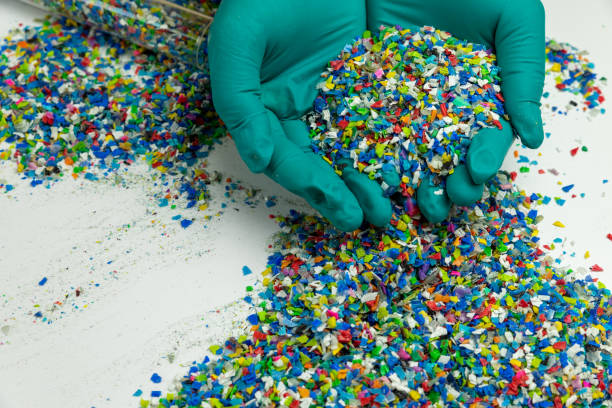
In the ever-evolving landscape of medical materials, biodegradable polymers have emerged as transformative agents, ushering in a new era of sustainability and innovation. These natural polymers, designed to degrade over time, offer many benefits in medical applications, from reducing environmental impact to fostering improved patient outcomes.
Properties of Biodegradable Polymers
- Biodegradability
The primary and defining property is the ability to undergo natural degradation over time into non-toxic byproducts. This property is crucial for applications where long-term implantation is not required, reducing the need for removal surgeries.
- Tunable Degradation Rates
Biodegradable polymers offer tunable degradation rates, allowing researchers to adjust the material’s composition to match specific medical applications. This adaptability ensures the polymer degrades at a pace compatible with the healing process.
- Biocompatibility
Biodegradable polymers exhibit excellent biocompatibility, meaning they are well-tolerated by the human body. This property minimizes the risk of adverse reactions and inflammation, making them suitable for various medical applications.
- Mechanical Properties
The mechanical properties of biodegradable polymers are tailored to match the requirements of different tissues and applications. This customization ensures that the polymer provides sufficient structural support during healing.
- Drug Release Capabilities
Biodegradable polymers are often used in drug delivery systems, as they can release therapeutic agents in a controlled manner. This property allows for sustained and targeted drug delivery over a specified period.
Applications in the Medical Field
- Sutures and Wound Closures
Biodegradable polymers are commonly used to manufacture sutures and wound closure materials. As the wound heals, the polymer degrades naturally, eliminating the need for manual suture removal and reducing patient discomfort.
- Drug Delivery Systems
Biodegradable polymers play a crucial role in drug delivery systems, facilitating controlled release of medications over time.This application is beneficial for sustained treatment without the need for frequent interventions.
- Orthopedic Implants
Temporary implants, such as screws and pins, in orthopedic applications are often made from biodegradable polymers. The polymer provides support during the initial healing stages and gradually degrades as the natural tissue regenerates.
- Cardiovascular Devices
Biodegradable polymers are explored for use in cardiovascular devices, including stents. The controlled degradation of the polymer ensures temporary support for vessels without the long-term presence of a permanent implant.
- Tissue Engineering
In tissue engineering, biodegradable polymers serve as scaffolds for cell growth and tissue regeneration. The polymer’s temporary support encourages the formation of new, natural tissue.
- Surgical Sealants
Biodegradable polymers are employed in the development of surgical sealants and adhesives. They can assist in wound closure and tissue adhesion while gradually degrading as the tissues heal.
Conclusion
In the dynamic landscape of medical materials, from the robust properties of titanium to the versatility of polyethylene and the promising potential of biodegradable polymers, it’s evident that innovation is steering the course of healthcare. These materials, each with unique properties and applications, contribute to advancing medical technology and enhancing patient care and treatment outcomes. This guide explored the 6 medical-friendly materials for any rapid prototyping need.
When it comes to producing medical-grade parts, precision and quality are paramount. This is where Zintilon excels. With a commitment to excellence and cutting-edge machining capabilities, Zintilon offers premium metal and plastic machining services that meet and exceed the stringent standards required for medical applications. Their expertise and dedication to precision engineering make them a trusted partner in the healthcare industry, ensuring that every component produced meets the highest safety and performance standards. Get a quote today to get started!




